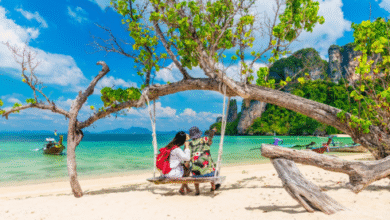South India Tour Packages Rameshwaram and Spiti in Winter: A Unique Travel Experience

India is a land of diversity, offering everything from sacred pilgrimage towns in the south to adventurous landscapes in the north. If you are planning your next vacation, you might want to consider two very contrasting yet equally fascinating destinations—south india tour packages rameshwaram and the raw beauty of Spiti in winter. Both promise an unforgettable travel experience but in completely different ways, making them ideal for travelers who love to explore cultural depth as well as natural wonders.
Rameshwaram: A Spiritual Gem of South India
Rameshwaram, located in Tamil Nadu, is one of the holiest towns in India and an important pilgrimage site for Hindus. It is part of the Char Dham Yatra and is particularly revered for the Ramanathaswamy Temple, which is dedicated to Lord Shiva. This temple is famous for its long corridors, intricate carvings, and sacred water tanks known as “theerthams.”
When you opt for a South India package that includes Rameshwaram, you can expect not only temple visits but also cultural immersion, pristine beaches, and heritage explorations.
Attractions Covered in Rameshwaram Packages
- Ramanathaswamy Temple – The heart of Rameshwaram, renowned for its 1,200 intricately carved pillars.
- Dhanushkodi Beach – A ghost town and beach offering spectacular views of the confluence of the Bay of Bengal and Indian Ocean.
- Pamban Bridge – India’s first sea bridge and a marvel of engineering.
- Agni Theertham – A sacred spot where devotees take a holy dip before entering the temple.
- Gandhamadhana Parvatham – A historic viewpoint associated with the Ramayana.
Tour packages to Rameshwaram usually include transportation, hotel stays, temple tours, and day trips to nearby locations like Madurai or Kanyakumari. These packages can range from budget-friendly pilgrim trips to luxurious cultural tours.
Spiti in Winter: A Himalayan Adventure
On the other end of the travel spectrum lies Spiti Valley, often called the “Middle Land” between Tibet and India. Visiting Spiti during summer is already a breathtaking experience, but the true magic is unveiled during winter. The snow-covered valleys, frozen rivers, and isolated monasteries make Spiti a wonderland for adventure seekers.
Why Visit Spiti in Winter?
- Snow Wonderland: From December to March, the entire valley is blanketed in snow, offering unmatched views.
- Unique Culture: Winter is the best time to witness traditional Buddhist festivals and interact with locals in a more authentic way.
- Adventure: Trekking on frozen rivers, wildlife spotting (like snow leopards), and experiencing temperatures as low as -20°C are part of the thrill.
- Peace and Solitude: With fewer tourists around, you can enjoy the serenity of the Himalayas in its rawest form.
Key Attractions in Spiti During Winter
- Key Monastery – A 1,000-year-old Buddhist monastery standing tall amidst snow.
- Kaza – The main town and a hub for winter treks.
- Langza and Hikkim – Known for fossils, remote beauty, and one of the highest post offices in the world.
- Chandratal Lake – Though often frozen and difficult to access in deep winter, it’s a dreamlike sight when accessible.
Travel Tips
- For Rameshwaram, plan between October and March when the weather is pleasant for temple visits and sightseeing.
- For Spiti, winter travel is challenging and recommended only for seasoned travelers or those booking with specialized adventure tour operators. Carry proper winter gear, medicines, and be prepared for limited connectivity.
Conclusion
Rameshwaram and Spiti might be poles apart, but both destinations showcase the incredible diversity of India. While Rameshwaram offers spiritual solace, temples, and cultural depth, spiti in winter takes you into the heart of the Himalayas with its snow-capped peaks and unparalleled adventure. Whether you’re looking for peace or thrill, these two destinations ensure that your travel diary is filled with memories worth cherishing.




